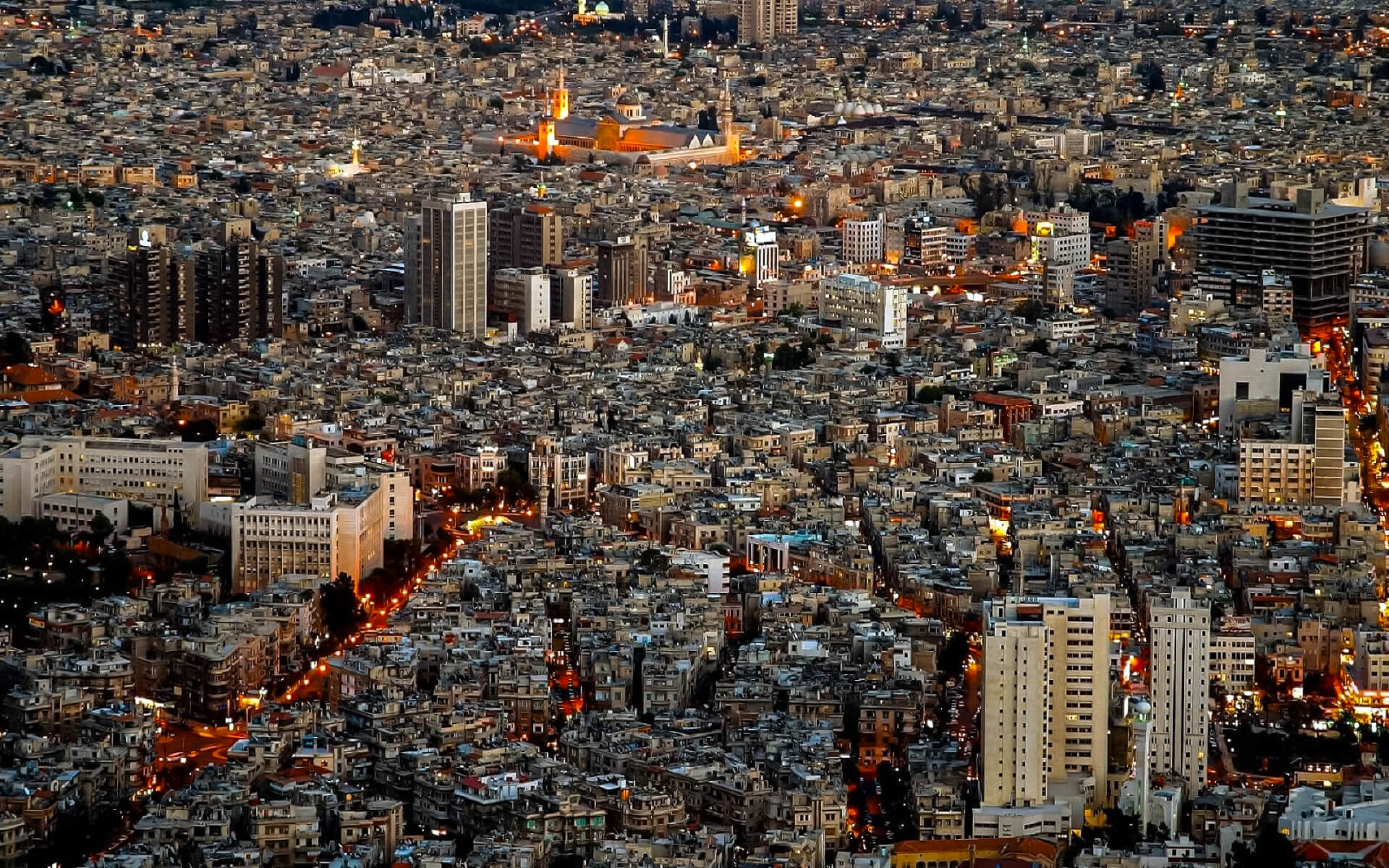The Souq al-Hamidiyya, a spacious bazaar lined with small shops, is accessed by columns from a Roman temple erected on the site of an even earlier temple. The souqs itself smell of cumin and other characteristic scents, and sections devoted to anything from leather and copper products to inlaid boxes and silk scarves may be found.
At the end of Souq al-Hamidiyya sits the enormous Umayyad mosque, an architectural marvel with three minarets. It was an Assyrian temple, then a Roman Jupiter temple, then a church when Rome converted to Christianity, then a mosque and a church combined, and ultimately a mosque till today. All of the symbols are still in place, and some Christian artwork can be seen on the inner walls. Inside the main chamber of the mosque lies the burial of John the Baptist (for Muslims, prophet Yahya). Women are encouraged to cover their hair, arms, and legs. Abayas (full-body wraps) are given for the admission fee of 50SP. It is one of Islam’s holiest places, and international visitors are permitted to go around the prayer area.
The Citadel is a fort-like part of the surviving city wall at the opposite end of Souq al-Hamidiyya (but be sure to visit Aleppo’s Citadel for a really wonderful experience).
Nearby, you may see the Mausoleum of Salah al-Din, often known as Saladin in the West, the greatest anti-crusader. There’s a fantastic statue of him on horseback right next to the citadel that will take your breath away. There are two disappointed Frankish warriors under the horse’s slightly elevated tail if you go all the way around it. Inscriptions identify these two knights as Guy de Lusignan, King of Jerusalem, and Reynald de Chatillon, Lord of Kerak, an important castle in the Holy Land. Both were caught at Salah al-decisive Din’s victory at Hattin; Guy was imprisoned and subsequently freed in Damascus, while Reynald was killed as retribution for his many misdeeds.
Because to the rain shadow effect of the Anti-Lebanon mountains and the prevailing ocean currents, its climate is characterized as cool steppe climate.
Summers are hot and dry, with little humidity.
Winters are chilly and wet, with little snowfall. From October to May, the annual rainfall is roughly 130 mm (5 in).
Damascus was built in a strategic location on a plateau 680 meters (2,230 ft) above sea level and about 80 kilometers (50 miles) inland from the Mediterranean, sheltered by the Anti-Lebanon mountains, watered by the Barada River, and at a crossroads between trade routes: the north/south route connecting Egypt with Asia Minor, and the east-west cross-desert route connecting Lebanon with the Euphrates river valley.
The contemporary city has an area of 105 km2 (41 sq mi), of which 77 km2 (30 sq mi) is urban and the remainder is occupied by Jabal Qasioun.
Damascus’ ancient city, surrounded by city walls, is located on the south bank of the river Barada, which is almost dry (3 cm (1 in) remaining). To the south-east, north, and north-east, it is bordered by Middle-Eastern-era suburbs: Midan in the south-west, Sarouja and Imara in the north and north-west. These communities sprung up along routes heading out of town, around the graves of religious dignitaries.
Damascus’ historical status as an important trading hub has shifted in recent years as a result of regional political developments as well as the advancement of contemporary commerce.
Damascus’ tourist business has a lot of promise, but the present civil conflict has limited these chances. Damascus’ abundant cultural endowment has been discreetly exploited since the late 1980s with the building of several lodging and transit businesses, as well as other associated projects. Numerous boutique hotels and busy cafés have arisen in the ancient city during the early 2000s, attracting both European visitors and Damascenes.
Damascus has a diverse industrial sector, including textile, food processing, cement, and numerous chemical sectors.
The bulk of industries are operated by the state, although partial privatization, as well as economic activities led by the private sector, were authorized beginning in the early 2000s with trade liberalization. In the ancient city, traditional handcrafts and artisan copper engravings are still made.
The Damascus stock market officially started for business in March 2009, and it is Syria’s sole stock exchange.
Most hotels can arrange international phone calls, but the rates are exorbitant. Most internet cafés are set up for VOIP and provide a more cheaper option, albeit the pricing does reflect the connection quality.
Although Internet connection is generally accessible, the Syrian government filters traffic, which may create some odd connectivity glitches.


